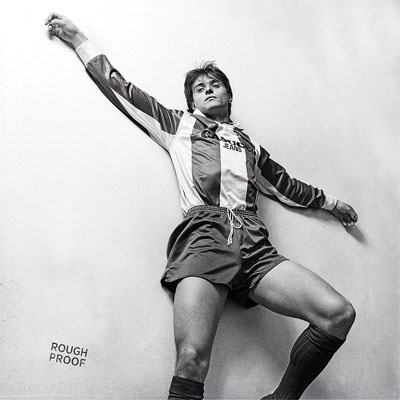Dragan Stojković
Like many other players who have never fulfilled their potential, the name of Dragan "Pixie" Stojković will always be included in many different what-if sce-narios. Renowned for his technique, creativity and dribbling skills, Stojković went through numerous chronic injuries during his tumultuous career. Despite these hindrances, however, he remains one of the biggest stars of Serbian and Yugoslavian football..
Basic facts
Birth: 1965
Country: Serbia (Yugoslavia)
Position: Midfielder
Clubs
Radnički Niš (1981–1986)
Red Star Belgrade (1986–1990)
Marseille (1990–1994)
Verona (1991–1994, loan)
Nagoya Grampus Eight (1994–2001)
Stats
Club football: 422 matches, 125 goals
National team: 84 matches, 15 goals

Dragan Stojković as poster boy.
Biography
The fifth star of Red Star
After starting his senior career with his hometown team Radnicki Nis, Stojković moved to Red Star in 1986. By then, he had already debuted for the national team, and the expectations for him were sky-high. Despite being one of the youngest players in the team during his first season with Red Star, Stojković quickly established himself as the club's leader, scoring 17 goals in 30 appearances.
In his next three seasons with the club, Stojković led Red Star to two First League titles. In 1988 and 1989, he was named the best player of the Yugoslavian championship. By the end of his career with the club, he had scored 54 goals in 116 games. These stellar performances led to him being promoted into the fifth star of Red Star, joining the club's other four biggest legends: Mitic, Sekularac, Dzajic, and Petrovic.
Troubles in France
In 1990, Stojković moved to Olympique de Marseille for a transfer fee of £5,5 million. Back then, Marseille had a star-studded team filled with players such as Eric Cantona, Jean-Pierre Papin, and Didier Deschamps. Once again, the expectations were high, especially after Stojković's star turn at the 1990 World Cup, where he was voted into the tournament's all-star team.
However, a particularly vicious knee injury caused Stojković to miss most of his first season with the club. Marseille still managed to reach the final of the 1991 European Cup, where they lost to Red Star on penalties. Stojković only entered the game during the extra-time, failing to make much of an impact. According to an urban legend, he was one of Marseille's designated spot kick takers, but refused to shoot a penalty against his former team.
He remained in Marseille for three more seasons, but multiple injuries saw him mostly relegated to bench duty. After realizing he would never get a real chance in Marseille, he decided to cut his losses and move to Japan. In 1994, he signed with Nagoya Grampus Eight, which was briefly managed by Arsene Wenger.
Big in Japan
During his seven seasons with Nagoya, Stojković finally started delivering on his potential. In 1995, he led the club to their first Emperor's Cup and was voted J-League MVP. He was also voted into the All-Star team on three separate occasions: in 1995, 1996, and 1999. In 1999, Stojković played a big part in Nagoya winning another Emperor's Cup after defeating Sanfrecce Hiroshima 2-0 in the final.
Being one of the biggest stars in Japanese football during his stint with Nagoya, it didn't take long for Stojković to become one of the club's icons. After he retired from professional football in 2001, the club honored Stojković by naming a street after him. The love was clearly mutual, as he returned to Nagoya as coach in 2008. Two years later, he led the club to their first ever J-League title, earning himself the title of Manager of the Year.
By Martin Wahl
References
https://en.wikipedia.org/wiki/Dragan_Stojkovi%C4%87
Image source:
Vulkahn